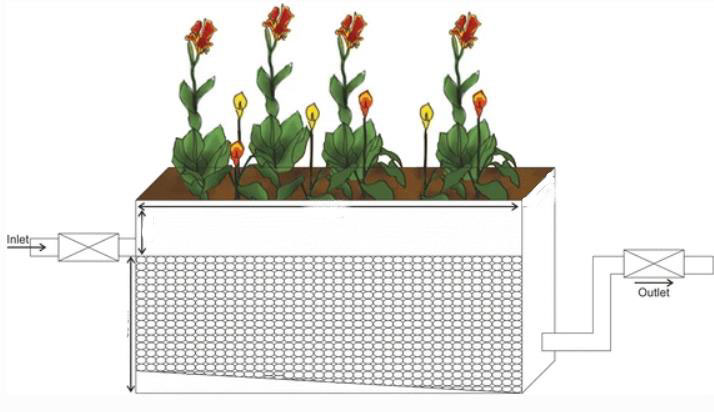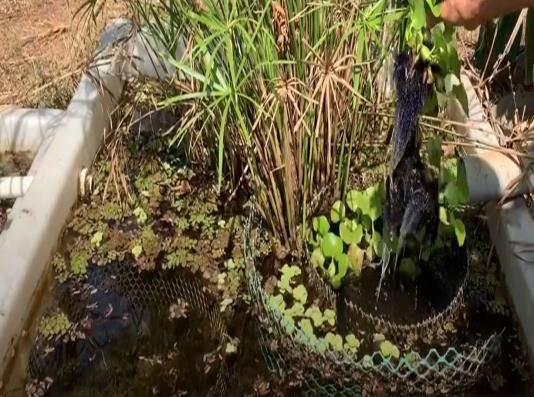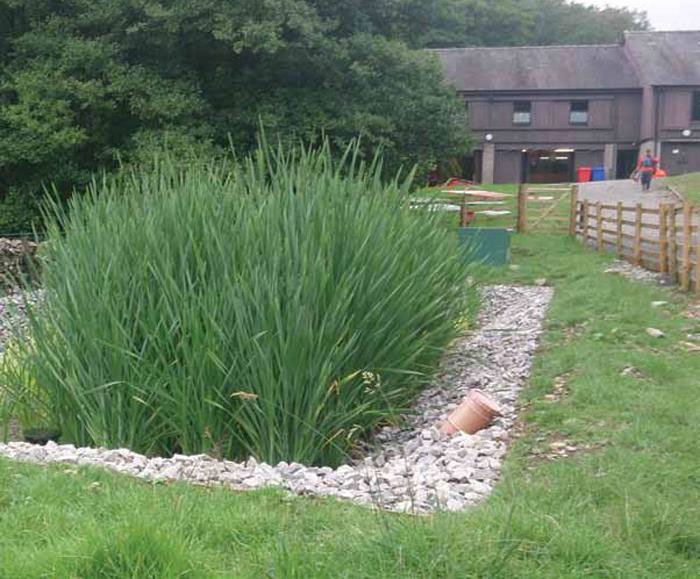Greywater Filtration
A Sustainable Management of Wastewater from a Waste to a Valuable Water Resource
The sewerage from our houses can be divided into two types, Greywater and Blackwater. Greywater consists of wastewater from Kitchen, washing basins, laundry, sinks, and showers. While the blackwater consists of waste products from toilets mainly consisting of urine and feces. If collected separately, it is easy to filter and reuse the greywater for irrigation purposes. Separated greywater has a low concentration of pollutants and its treatment would be easier than mixed wastewater. The concept of an onsite wastewater differentiable treatment system can be one of the suitable systems for off-the-grid areas where there is no central sewerage system. In large parts of the world, centralized sewerage is still not available. If reuse purpose is focused on irrigation only advanced treatment technology for nitrogen, phosphorus removal would not be necessary. The most important point is to be low cost and simple because most of those who need greywater reuse are low-income people.

Natural Greywater Treatment System:
In the past, there was no centralized sewerage treatment system. Old sewerage systems consist of interconnected sewers or pipes which dump the wastewater to some constructed wetland or siphon ponds. This type of sewer system still exists in rural areas around the world. The natural greywater treatment system consists of a system of a hybrid system of constructed wetlands filled with sand, gravel, and water filter plants. Many naturally occurring water filter plants use toxins present in greywater as a nutrient such as the Canna plant. Following are some of the greywater treatment systems.

1- Hybrid Constructed Wetland System:
A hybrid constructed wetland system is the system in which greywater is passed through different wetlands which are filled with plants that can absorb harmful products present in greywater. Greywater or the wastewater from washing basins, laundry, and the kitchen sink is collected separately in the pipe. This pipe then comes to Chamber 1.

Chamber 1:
Chamber 1 is a plastic tank and is 1m long,1.5m wide, and 1m deep. The pipe is connected at the bottom of the tank. The pipe is then connected to 4 smaller pipes having perforations at the bottom. The slope of pipes should be such that the wastewater should flow under the gravity action. The slope should not be more than 2 percent. The tank is filled with river sand and gravel. On top of the sand, there are water filter plants such as Canna. Canna is a very good water filter and flowers grow on it. Greywater drains out of perforated holes from the bottom of pipes. Then the natural purification process takes place. Greywater passes through the sand and gravel layer leaving the pollutants such as soap particles in the sand layer. The roots of Canna plants are in the sand. Canna grows well in the sand and the dirty water. Other water-loving plants such as Leptochloa fusca, typhadomengensis, and Cyperus can also be used for this purpose.
Chamber 2:
From chamber one, the cleaner water comes to chamber 2 which is also a plastic tank. Chamber 2 is 1.5m wide,1m long, and 30cm deep. This chamber only contains water and some floating plants. There is no sand or gravel in this tank. This tank contains floating plants such as water hyacinth which have very fibrous roots. Water hyacinth is a natural water filter and can absorb harmful minerals from the water. Water hyacinth grows fast in the water. After 2-3 weeks take the water hyacinth out of the chamber and throw it on the farm. It will become fertilizer for the land. Other water-loving plants such as water lettuce, Cattail, and Water Mint are also placed inside the tank. They all are water-loving plants and they absorb harmful nutrients from dirty water.

Chamber 3:
From chamber 2 water goes to chamber 3 with an outlet pipe. This is also a plastic tank that is 1.5 wide,1.5m long, and 30cm deep. This tank is also filled with water filter plants such as Syngonium, Umbrella Palm, Lotus, and Water Lily. Water lilies are kept in a container. The outlet drain is connected at top of every tank. This helps in keeping the greywater in the tank for a suitable time. This setup is for a medium-size house having 5-6 residents. Necessary modifications in size are required according to the water consumption. Sometimes grease container is also added to the main sewerage pipe to entrap the grease. The water is now cleaned and can be used for irrigation purposes.
2- Reed Beed System:

A reed bed is another natural filtration system that can be used to treat and improve water quality before discharging into the environment. Reeds are one of the water filters found in nature. Reeds are tall grasses usually find around water bodies. Their roots have the unique property to break down things like bacteria and clean up the water Reed beds are the ecological solution to what otherwise could be a sticky and expensive problem. They are a low-cost, low-tech, zero-energy solution. They are pretty to look at and, in these times of climate change and species loss, they provide a rich habitat, supporting a huge range of wildlife. They work by allowing bacteria, fungi, and micro-organisms to break down, digest, and clean the wastewater to the point where it can be safely discharged.
Greywater is collected separately in the pipe. A trench is dug, a few feet deep. A plastic sheet is placed in the trench. On the trench then place a layer of coarse aggregate, followed by the layer of gravel and then a layer of sand. The only opening the plastic sheet has is the greywater drainage pipe which comes out at the bottom of the trench. At the top, reeds beds are planted.
Waste Water (Greywater) enters the trench from one side, and as it goes through the reeds bed, the roots of the reeds bed help to break down, decompose and purify the water as it makes its way to the other end of the trench. After a few days, water from the other ends gets filtered and can be collected in a little pond or can be provided to the field for irrigation purposes. The treated water is not suitable for human use and should only be used for irrigation purposes.
Simple Greywater Systems For Your Home – Article
Grey Water Treatment Method in Eco Home – Youtube Video
Water Management in Permaculture | Filtering Water with Reed Beds – Youtube Video
Greywater Filtration – Download PDF
Natural Greywater Filtration Technique (WhitePaper Explanation in Urdu/Hindi) – Youtube Video




